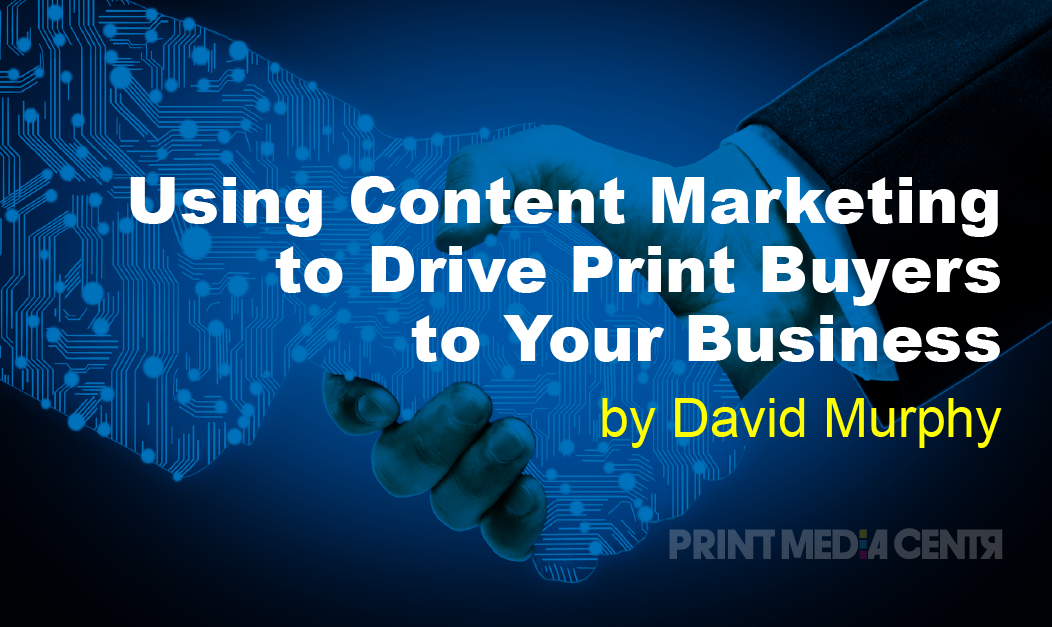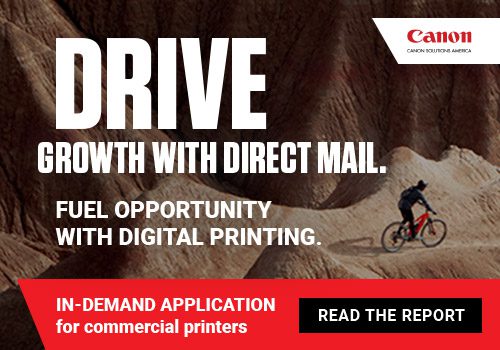Google “what is content marketing” and you’ll get bewildered by a dozen definitions. Some say that content marketing is really anything you publish on your website, blog, or social media. Nope: too broad. Here’s my definition: Good content marketing is what your company shares that is relevant, useful, or inspirational to your current or future customers. Otherwise, it’s just noise.

Relevance means it matters to the recipient. Content about labels and packaging is more relevant to product manufacturers than to service providers. Content about POP displays is more relevant to retailers than to non-profit associations. Timing comes into play regarding the seasonality of your audience. Direct mail volume is higher in Q4 so content on mailer design and postal savings strategies may be potentially more relevant in Q3 when your audience starts planning their campaigns. Simply stated, content is relevant if it’s a good fit for your audience.
Useful content should, at the very least, be interesting and engaging, but it’s even better if it’s educational – something the reader can learn or act upon. The act of consuming useful content is a satisfying experience. People appreciate getting useful information. When we do, we are more likely to click on the next piece of content arriving from that sender. This positive association between the content and the sender makes people more likely to engage with the content online by following, liking, commenting, and sharing with friends and colleagues. What useful printing tips, tricks, how-tos, did-you-knows can you share with print buyers?
Inspirational content can change or reaffirm one’s opinion or perspective on a topic. Maybe you have an idea that makes your audience think about their next print project in a different “that’s a good idea” way. Even better: your content can motivate action. In your blog, article, video, infographic, or podcast, you may give your prospects relevant, useful information that also inspires them to take the desired call to action (CTA). It may be for the reader/viewer to visit your website’s landing page and Learn More, Get A Free Sample, Order Now, or Speak to Sales. If your content inspires action with urgency, your blog post can turn into a click and ultimately to a sale.
Content marketing helps a lot with search engine optimization, but it doesn’t always have to be internet-based. It can be offline, as with your printed mail, signage, packaging, and your in-person event presentations. The best content is shareable across online and offline channels, in visual and verbal formats. Yet today, most references to content marketing are to digital marketing. More specifically: to unpaid (not advertising) media. Content marketing is not limited to text formats like email, newsletters, blogs, and articles. Video content is still rising meteorically. YouTube is the second most popular website after Google. By 2022, online videos will comprise over 82% of all consumer internet traffic — 15x higher than in 2017.
Audio is another increasingly popular format, including webinars, podcasts, and audiograms. In 2020, 37% of adults said they listened to podcasts. Also, data-based visuals like infographics, graphs, and vector illustrations provide a great augmentation to text-based copy to keep the reader engaged.
Good marketers know how to leverage and repurpose content to other formats so that additional audiences can consume it. Your hour-long webinar can be edited in post-production to generate perhaps ten 60-second videos or audiograms. A 30-page ebook can be repurposed to a website’s resource page, with multiple long-form articles and short-form blog posts created from that original content. Emails, newsletters, and a dozen social media posts can be linked back to that original piece or its variations.
So don’t let content marketing be confusing or overwhelming. Great ideas can be generated from content you have already created. If you are speaking with a happy customer, ask if you can write a success story or a case study about them – or simply use their quote as a testimonial. That conversation could become a blog post, a video, or a part of a new article.
Lastly, try to create a cohesive strategy around your content. Don’t just push out something new just because it’s new. Weave your content together into themes and make serialized threads. Publish your stories to specifically target audiences through the media they prefer at the times they prefer to consume them. Follow your leads as they flow through your funnel and give them relevant, useful information that inspires them to take action. Working on this strategy will bring you more trackable sales conversions and more effective business outcomes.
 David Murphy is the founder and CEO of Nvent Marketing, a marketing agency specializing in digital marketing for the print industry. David has 30+ years’ experience in the graphics and document print production industry. He has served as a board member and advisor to print organizations and associations including Print Industries of America, Association for Print Technologies, and Electronic Document Scholarship Foundation. David was also awarded the Idealliance Soderstrom Society Award for Print Industry Leadership. David can be reached at dm@nventmarketing.com.
David Murphy is the founder and CEO of Nvent Marketing, a marketing agency specializing in digital marketing for the print industry. David has 30+ years’ experience in the graphics and document print production industry. He has served as a board member and advisor to print organizations and associations including Print Industries of America, Association for Print Technologies, and Electronic Document Scholarship Foundation. David was also awarded the Idealliance Soderstrom Society Award for Print Industry Leadership. David can be reached at dm@nventmarketing.com.












